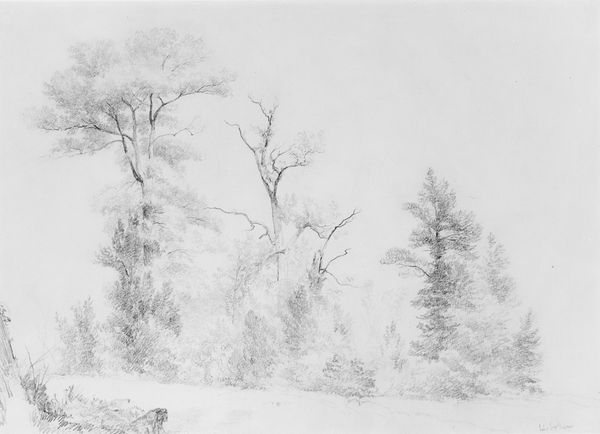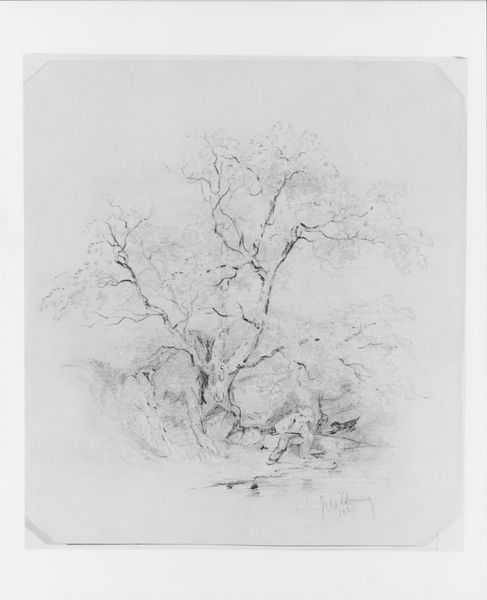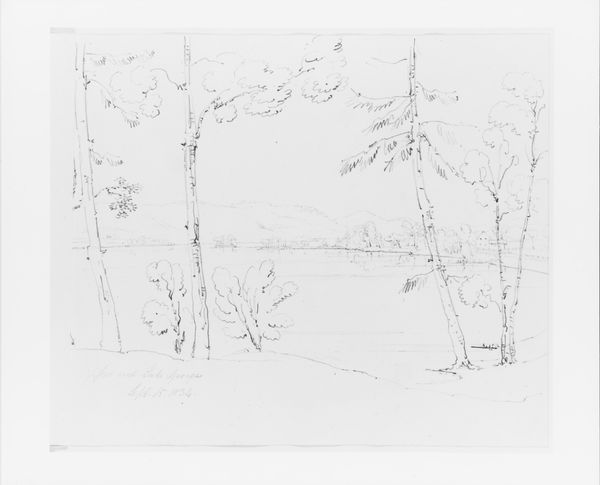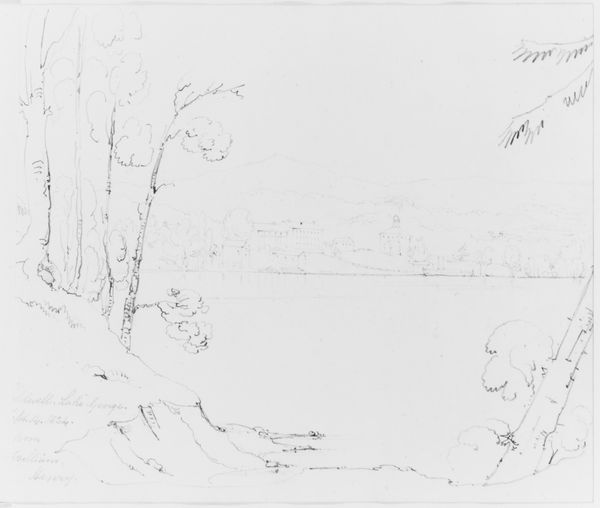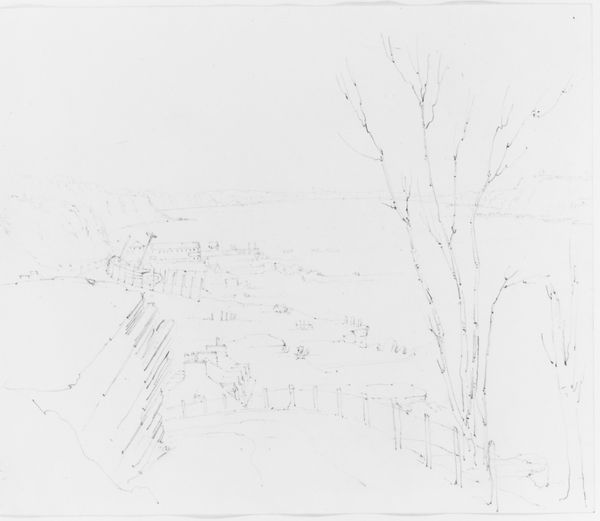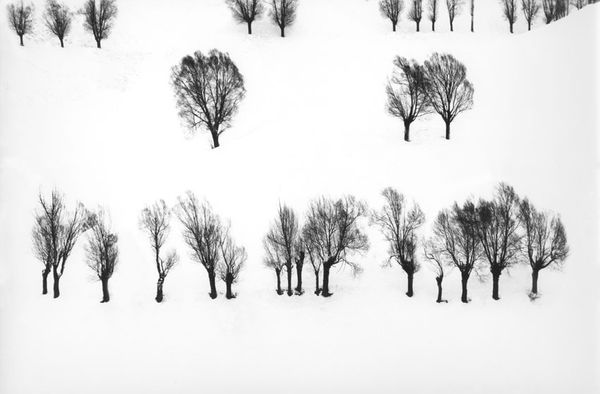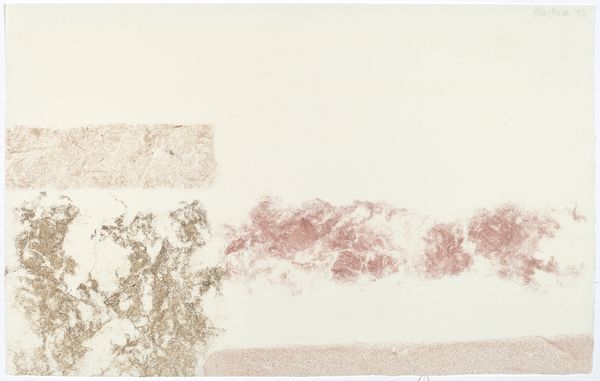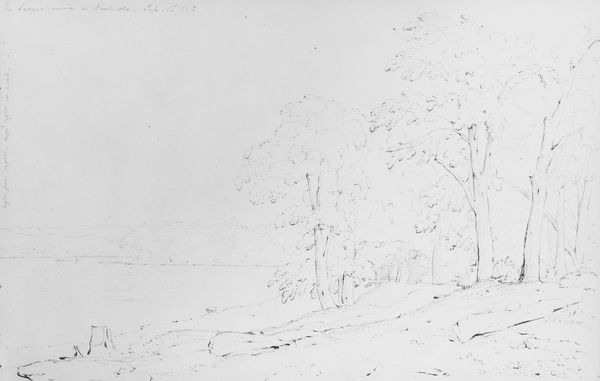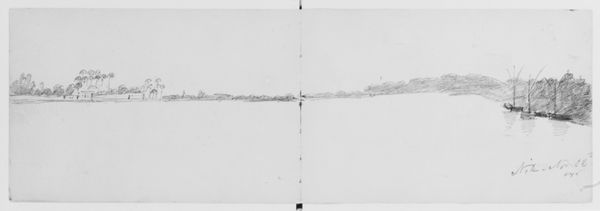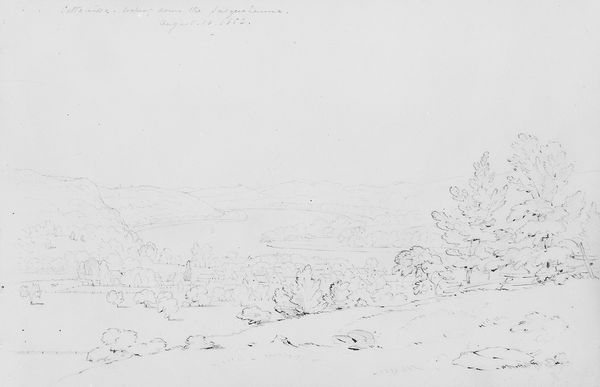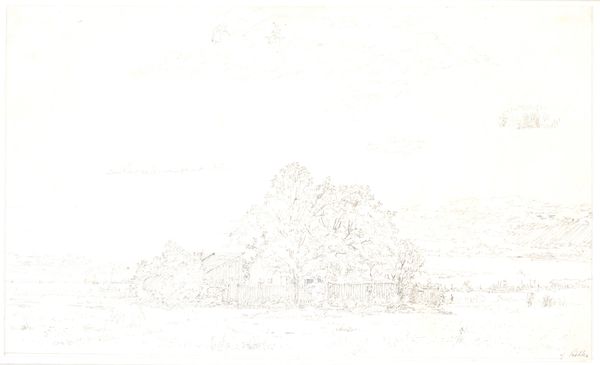
Landscape with Trees (from Sketchbook VII) 1886
0:00
0:00
drawing, plein-air, pencil
#
organic
#
tree
#
drawing
#
organic
#
impressionism
#
plein-air
#
landscape
#
pencil
Dimensions: 5 x 7 1/2 in. (12.7 x 19.1 cm)
Copyright: Public Domain
Curator: Welcome! We're looking at "Landscape with Trees," a pencil drawing by William Trost Richards from 1886, part of his Sketchbook VII, currently held at the Metropolitan Museum of Art. Editor: It strikes me immediately as incomplete. Half the page is barely roughed in, a ghostly echo beside the meticulously rendered trees on the right. Curator: Indeed. Richards, an American artist, was deeply invested in capturing nature directly, en plein air. This sketchbook offers a glimpse into his process. Editor: I'm curious about the materiality. Was the pencil itself locally sourced? Was there a cottage industry supplying artists with sketching materials that then drove further study of landscapes? How does the price of the sketchbook determine who gets to use it, to sketch in this landscape? Curator: Interesting points. The rise of artistic tourism and accessible materials certainly influenced landscape painting as a popular genre. Richards exhibited widely; his ability to capture realistic detail was a large component of his marketability at the time. Editor: I'm also noticing the texture of the paper, its absorbency impacting the pencil's darkness and the precision of the lines. It feels immediate, a direct record of a specific moment. I wonder how much time he dedicated to the visible vs. the suggested. Curator: Precisely. The unfinished portion prompts us to consider what he deemed essential to "capture" in that moment. It might speak to the demands of his patrons, the market pressures to produce ‘finished’ picturesque scenes. Editor: It certainly offers an insight into the economics of art production in that era and raises pertinent questions about how landscapes and accessibility shape art's socio-political roles and its perceived value. Curator: Well said! Seeing Richards' working method offers so many perspectives. Editor: Absolutely. It's always fascinating to consider the conditions, literal and economic, of art creation.
Comments
No comments
Be the first to comment and join the conversation on the ultimate creative platform.


